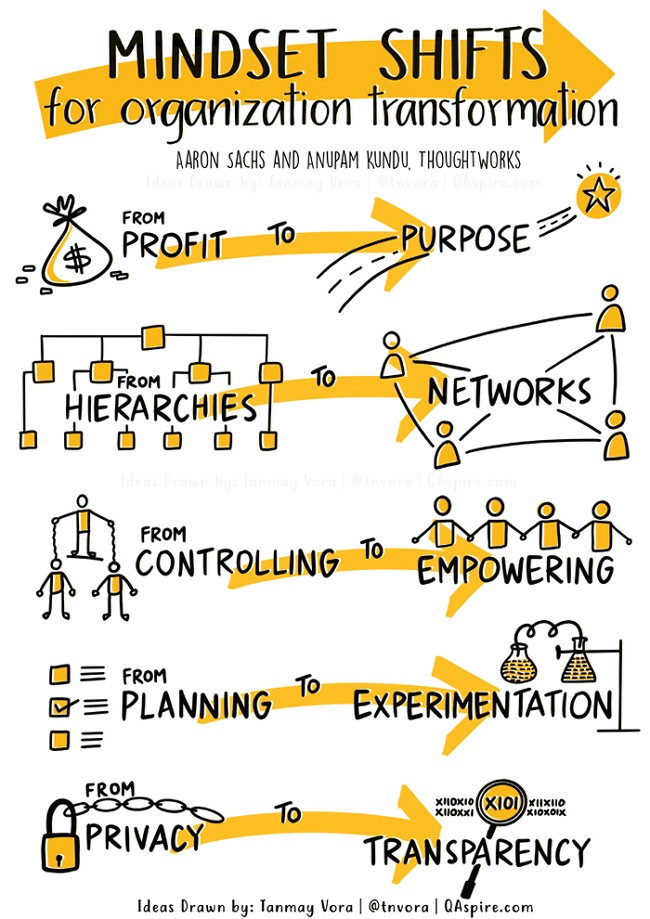Cause and Effect of Past Practices
To continue our discussion from Part 1, let's consider the roles of cause and effect on evolving Procurement practices.
Suppose an organization installed a Finance procurement overseer that does not have domain or market knowledge. This overseer will not be well-positioned to lead innovation or transformation initiatives. As a result, broader stakeholder engagement will be needed to transform Procurement and align future metrics to create greater value.
We must also recognize that if we have the unexperienced leading the unexperienced, our organizations will not be set up for success. However, in some Procurement functions (perhaps not yours), the inexperienced leading more experienced team members is even less sustainable.
Leadership Value Transformation
As leaders, we have to self-reflect and become aware of the need to transform and not become the roadblocks holding our function or talented teams back. Using the stick instead of a carrot and a "Whose fault is it?" mindset makes you more likely to lose skilled Procurement talent. Instead of seeing new approaches as threats to the established "compliance and control" methods of Procurement, we need to look inward, adapt, learn, and lead from the front.
Over recent years, a dramatic shift has been occurring whereby the business and market models are moving to As a Service, Managed Services, and Cloud. Prior to these market models, "shadow IT" was embraced by the business because the IT function had become too reactive and unable to effectively address business needs. These self-inflicted wounds resulted in many IT organizations growing transactional for "keeping the lights on," instead of driving strategic business discussions.
Procurement, now more than ever, faces a similar predicament. With business leaders embracing these market models for processes and functions, we have no choice but to get on with it. We can learn from our business partners' experiences to help guide our teams in adding value so that we don't become lost in "shadow Procurement."
Creating New Norms and Embracing Market Shifts
Procurement marketplaces, AI, and other approaches offer more effective means of solving these long-endured problems if the CPO can get on with the transformation. These market models have already started demonstrating more effective results and efficiencies than the traditional Procurement approaches. These models are here to stay with nowhere to go but up. Over the next 18 to 36 months, these Procurement models will continue to outperform on value delivery and performance that long-established Procurement practices cannot match or surpass. These new Procurement models will be on solid ground while still effectively managing organizational risk and compliance, pushing Procurement to transform.
It is crucial to recognize that organizations have invested in the Procurement infrastructure that is now deeply rooted and widely accepted as the "norm." The solution isn't necessarily to blow up the entire Procurement function. To improve inefficiencies resulting from the past incremental and just enough practices, Procurement will require vision and support to transform.
First, we need to reflect by taking a step back on how our function and the CPO role can transform into becoming a Chief Partner Officer. We need to revisit how we hire, teach, and retain talent. We will need to review if we promote leaders with domain expertise, vision, and experience to lead the transformation. Organizations must have sufficient support with investments and refined metrics to drive partnerships across the organization.
Transformational Procurement Leader for the Fourth Industrial Revolution
Procurement transformation can only succeed with a leader that possesses a different type of expertise and approach. With AI, not having domain experts as decision-makers willing to be held accountable for process changes will be detrimental to the adoption of this emerging technology.
If left unchecked, AI implementations will be rife with biases that have persisted in organizations and be ill equipped to streamline existing ineffective processes. Suppose AI is implemented merely as another tool for Procurement. In that case, it will not produce the highest benefits nor reduce the friction of poorly designed processes.
When a functional leader lacks domain knowledge, they will be hard-pressed to simplify processes, reimagine to pivot, or transform to embrace newer business models or technologies. These insecurities often lead to an organization becoming hampered by politics and run on fear, which ultimately undermine Procurement’s ability to run like a business. There are many improved ways to manage risk and compliance without sacrificing partnership and value-driven activities using AI and automation.
There will be resistance to Procurement unless there is a collaborative partnership approach with the stakeholders, teams, and supplier community that places Procurement leaders at the helm. It will continue to be seen as a "check the box" function that is devoid of value-add by most, making it difficult for Procurement to gain a seat at the table.
Determining Your Current State
Suppose your organization has experienced Procurement challenges and is now seeking ways to transform. Start by reviewing the function carefully to ascertain:
- What is the perception of Procurement in the organization and its effectiveness?
- What are the Procurement metrics? How have they evolved?
- How do Procurement metrics take into consideration market dynamics?
- Are there well-defined, clear, and transparent career paths for all Procurement roles?
- What are the learning and training investments made for the Procurement teams?
- Does the Procurement function have processes that are agile, proactive, and focused on the partnership?
- When was the last time Procurement processes were reviewed, optimized, or transformed?
- How much automation across the process lifecycle exists in your Procurement function?
- Do the Procurement processes have self-service and customer-centered capabilities across the end-to-end process value chain beyond shifting Procurement administrative responsibilities to the stakeholders and calling it self-service? For example, think about what else one can do beyond request a purchase order, gain system-based approvals, or approve invoices on the PO system for compliance control.
- How much of the self-service and automation capabilities focus on the stakeholder user needs and not just the Procurement user?
- Are automation and self-service designed with the user experience of all personas in mind?
What should you do if you find answers to any or all of these to be unsatisfactory? Carefully examine Procurement leadership to understand their motivations or lack thereof to evolve the function. Between this pandemic-induced pause requiring all areas to form new norms and the coming age of AI, Procurement should have no choice but to transform. However, to gain support from its internal and external stakeholders, a few rules will need to be rewritten.
Finding a Path Forward
Imagine a world where sales and Procurement processes are transparent, consistent, and set up to remove biases and distrust that currently exists in the cycle. Inefficiencies, bureaucracies, and risks would fall to the wayside. Additionally, metrics and reporting relationship restructuring can help to transform Procurement. So, let's make a case for shifting focus to grooming Chief Partner Officers who are willing to self-reflect, adapt, and continuously learn.
Led by AI, the fourth industrial revolution will push organizations and functions to adapt substantially. As skillfully articulated by Tanmay Vora and his team, transformation will require a leadership mindset shift.

If done correctly, Procurement stands to have the most impactful transformation for an organization. The Procurement function can still be relevant in the upcoming age of AI and the experience-based economy if we choose to lead the transformation.
For a Procurement function to be "its best self," it requires shifting the role to becoming a Chief Partner Officer who is a visionary and ready to lead from the front. Our metrics should be reflective of the partnership value achieved and end-to-end process transformation.
To thrive in the digital and experience economy, visionary leaders focus on these foundational tenets to embrace transformation:
- Reimagining the scope and responsibilities of Procurement
- Adapting newer business models, such as digital procurement marketplaces
- Leveraging emerging technologies, such as AI and blockchain, to free up our teams to focus on strategic initiatives
- Embracing automation to speed up transactional tasks
- Creating the end-to-end Procurement process lifecycle with all user personas in mind
- Simplifying and designing the end-to-end process with emerging technologies such as AI and blockchain in mind instead
- Moving from being process and compliance police to becoming a partner
Future Procurement Leadership Qualities
Transforming Procurement will require leaders who are secure in their skills, operate from the foundation of trust and support, plus can partner with their teams and stakeholders. Procurement and stakeholder teams have been breathlessly waiting for this function to transform. This is only possible if we can shift the role from being a Chief Budgeting Officer to a Chief Partner Officer mindset with fresh metrics for accountability and performance.
A Chief Partner Officer will be invaluable to an organization and effortlessly bring improvements to its top and bottom lines. This leadership style will make the function more scalable to meet the organization's demands, improve transparency, and reduce cycle time to manage risk and compliance more effectively. When there is a genuine intent to increase transparency, efficiencies, and automation, there will be additional support from stakeholders to benefit everyone involved for mutual success.
The transformation of Procurement will spur improvements in other business areas. To reap the full benefits, Procurement transformation that includes people, processes, and automation must be part of the dialogue.
Final Thoughts on Transforming Procurement
To gauge Procurement engagement and sentiment, I welcome participation in this Sourcing Industry Group poll.
It is inspiring to hear success stories where the Procurement organization value delivery changed using strategic and partnership-driven metrics and where stakeholders became advocates of Procurement for others embarking on this journey. It would be great to hear success stories of when adequate investments to automate the end-to-end Procurement process lifecycle helped propel the Procurement organization forward.
So, let's turn a leaf while embracing a new norm and hope for a change that leads to transforming the Chief Procurement Officer role into a Chief Partner Officer!









